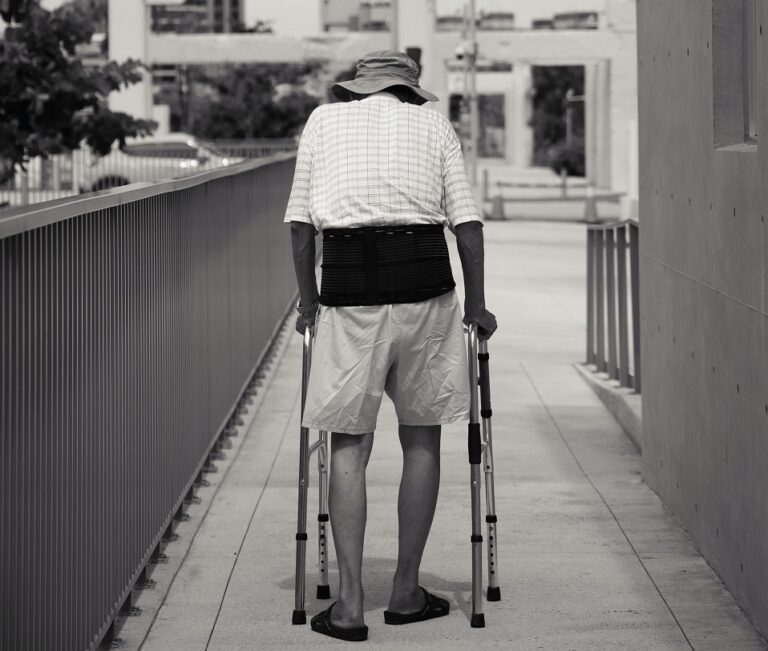Page Contents
Osteoporosis is a chronic condition where bones become weak, brittle, and more susceptible to fractures. It occurs when the body loses too much bone, makes too little bone, or both. While it can affect people of all ages, it is particularly common among older adults due to age-related bone loss. Often called a “silent disease”, osteoporosis progresses without symptoms until a fracture occurs, typically in the hip, spine, or wrist. These fractures can be life-altering, leading to loss of independence and reduced quality of life in the elderly.
Prevalence of osteoporosis
Osteoporosis affects more than 200 million people worldwide. According to the International Osteoporosis Foundation (IOF), one in three women and one in five men over the age of 50 will experience an osteoporotic fracture in their lifetime.
In Asia, including rapidly ageing populations like Singapore, the number of hip fractures is expected to increase significantly due to longer life expectancies. Hip fractures are particularly concerning, as they are associated with a high risk of mortality, approximately 20% of older adults die within a year following such an injury. This growing public health concern demands greater awareness and preventive measures.
Types and stages of osteoporosis
There are two main types of osteoporosis:
Primary osteoporosis
This includes postmenopausal osteoporosis (Type I), due to hormonal changes, and senile osteoporosis (Type II), related to ageing.Secondary osteoporosis
Caused by other medical conditions or medications (e.g., long-term steroid use, thyroid disorders, or malabsorption syndromes).
Osteoporosis also progresses in stages:
Osteopenia
Early-stage bone loss, where bone density is lower than normal but not low enough to be classified as osteoporosis.Established osteoporosis
Significantly reduced bone density with an increased risk of fractures.Severe osteoporosis
Presence of one or more fragility fractures with very low bone density, often resulting in deformities or disability.

Differences between osteopenia, osteoporosis, and osteomalacia
While these terms are sometimes confused, they refer to different conditions:
Osteopenia is a precursor to osteoporosis. It reflects mild to moderate loss of bone mineral density but not enough to cause spontaneous fractures. It is a warning sign that the bones are weakening and may progress to osteoporosis without intervention.
Osteoporosis is more advanced than osteopenia and is characterised by significantly low bone mass and structural deterioration. This makes bones fragile and prone to fractures even with minimal trauma.
Osteomalacia, on the other hand, refers to the softening of bones due to a defect in bone mineralisation, often caused by vitamin D deficiency. It is more common in adults, whereas in children, the same condition is known as rickets. Unlike osteoporosis, which involves brittle bones, osteomalacia involves soft bones that are painful and prone to deformities.
What causes osteoporosis?
Osteoporosis results from an imbalance between bone resorption (breakdown) and bone formation. Several factors contribute to this condition:
Age
As people age, bone regeneration slows down, and bone mass naturally decreases.Hormonal changes
In women, estrogen plays a vital role in maintaining bone density. After menopause, estrogen levels drop significantly, accelerating bone loss. Similarly, low testosterone in older men contributes to bone thinning.Nutritional deficiencies
Lack of calcium and vitamin D impairs bone formation and mineralisation.Lifestyle factors
Sedentary behaviour, smoking, excessive alcohol intake, and poor nutrition increase the risk.Medical conditions
Chronic diseases like rheumatoid arthritis, kidney disease, and endocrine disorders can affect bone health.Medications
Long-term use of corticosteroids, anticonvulsants, or thyroid medications can weaken bones over time.
What are the implications?
The implications of osteoporosis extend beyond bones. For older adults, a single fall can lead to fractures that impair mobility, increase dependence on caregivers, and elevate the risk of hospitalisation and institutionalisation. Vertebral fractures can cause chronic pain, reduced height, and kyphosis (a stooped posture), which can affect breathing and digestion. Moreover, the psychological impact, such as fear of falling, depression, and social isolation, can significantly diminish overall well-being and quality of life of the older adults.

How to identify osteoporosis?
While bone mineral density (BMD) testing using DEXA (Dual-energy X-ray Absorptiometry) is the gold standard for diagnosing osteoporosis, early clues may arise before imaging. Older adults may report frequent back pain, loss of height, or a gradual stooping posture. Risk assessments like the FRAX® tool (Fracture Risk Assessment Tool) can estimate the 10-year probability of a fracture based on age, gender, weight, history of falls, smoking, alcohol intake, and family history of fractures. Regular health screenings and fall-risk assessments in nursing homes or clinics are crucial for early detection.
What are the common treatments?
Management of osteoporosis includes both pharmacological and non-pharmacological strategies.
- Medications such as bisphosphonates (e.g., alendronate, risedronate), denosumab (a monoclonal antibody), or hormone-related therapies help slow bone loss and reduce fracture risk. Calcium and vitamin D supplements are essential to support bone health.
- Exercise, especially weight-bearing and resistance training, helps maintain bone mass and improve balance.
- In cases of fracture, surgical repair and rehabilitation are often necessary to restore function.
Prevention is better than cure
Prevention should start early but remains essential throughout life. Strategies include:
Nutrition
Ensure adequate intake of calcium (1,000–1,200 mg/day) and vitamin D (800–1,000 IU/day).Physical activity
Engage in regular weight-bearing exercises like walking, dancing, strength training, Tai Chi Quan, Yoga, etc.Lifestyle modification
Avoid smoking and excessive alcohol consumption, which accelerate bone loss.Fall prevention
Modify home environments to reduce trip hazards, and encourage the use of assistive devices if needed.Screening
Regular bone health assessments, especially for those over 65 or with risk factors, can guide timely interventions.
Conclusion
Osteoporosis is a major concern in older adults but is often underdiagnosed until a fracture occurs. Early identification, lifestyle changes, and appropriate treatments can prevent complications and promote healthy ageing. As caregivers and healthcare providers, we must advocate for bone health awareness, routine screenings, and comprehensive fall prevention strategies to ensure our elders remain active, independent, and safe.
